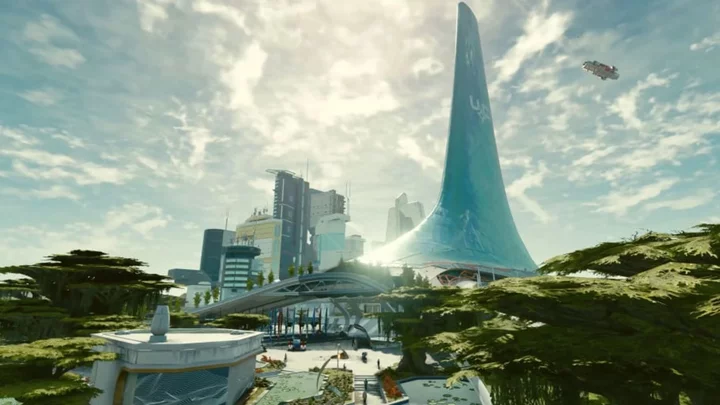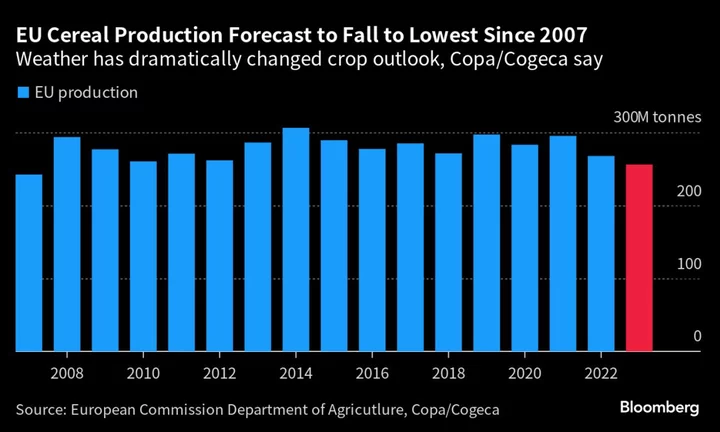
Royal website subject to ‘denial of service attack’, royal source says
The royal website was subject to a “denial of service attack”, a royal source has said. It was down for an hour-and-a-half on Sunday morning from 10am. A denial of service attack means the site was bombarded by traffic, which caused it to stop working, the source said. It is not the same as hacking, in which whoever is responsible actually gets into a website and the site is compromised. Neither the content nor the systems of the royal website were accessed on Sunday. It is currently unknown who is responsible for the cyber attack, the source said. The site is now up and running as usual. Read More Charity boss speaks out over ‘traumatic’ encounter with royal aide Ukraine war’s heaviest fight rages in east - follow live
2023-10-01 21:47

How to Fast Travel in Starfield
Here's how players can fast travel using a hand scanner in Starfield.
2023-09-07 05:21

Microsoft chief hints Sam Altman could still return as OpenAI staff demand board resignation
Sam Altman might still return to OpenAI after his ouster from the company, Microsoft chief Satya Nadella hinted. Chaos erupted at OpenAI on Friday as the company’s board abruptly fired its founder and chief Mr Altman, saying it “no longer has confidence in his ability to continue leading OpenAI”. Later, hundreds of the ChatGPT company’s employees threatened to quit unless its board resigned. When asked on Monday whether Mr Altman would join Microsoft, that has invested billions in the ChatGPT company, Mr Nadella said he was “open to both options”. “Look, that is for the OpenAI board and management and the employees to choose,” he told CNBC. “We obviously want Sam and Greg to have a fantastic home if they’re not going to be at OpenAI,” the Microsoft chief said. “We chose to explicitly partner with OpenAI and we want to continue to do so, and obviously, that depends on the people of OpenAI staying there or coming to Microsoft,” Mr Nadella had said. Microsoft later officially announced it was hiring Mr Altman and OpenAI co-founder Greg Brockman, who resigned on Friday. “Extremely excited to share the news that Sam Altman and Greg Brockman, together with colleagues, will be joining Microsoft to lead a new advanced AI research team,” Mr Nadella said in a post on X. “We look forward to moving quickly to provide them with the resources needed for their success,” he said. Mr Altman’s sacking was followed by about 500 staff at the company demanding the board’s resignation and the reinstatement of their dismissed boss. The employees signed a letter demanding OpenAI’s board resign and reinstate Mr Altman, claiming the decision to oust him jeopardised the company’s work. The letter was reportedly signed by several senior staff at OpenAI. Mira Murati, the company’s chief technology officer who was appointed as the interim chief following Mr Altman’s exit, was one of the signatories. Another signatory, Ilya Sutskever, the company’s chief scientist and one of the board members, expressed “deep regret” over the decision to remove Mr Altman. Employees at the company’s headquarters reportedly refused to attend an emergency all-hands meeting with new OpenAI boss Emmett Shear that was scheduled on Sunday. Some had responded to a Slack announcement with a middle-finger emoji, according to reports. Mr Nadella also said “it’s clear something has to change around the governance” at OpenAI. “We’ll have a good dialogue with their board on that, and walk through that as that evolves,” he said. Mr Altman said on X that his “top priority” remains to “ensure OpenAI continues to thrive”. “We are committed to fully providing continuity of operations to our partners and customers,” the ousted tech boss said on Monday. “We have more unity and commitment and focus than ever before. We are all going to work together some way or other, and I’m so excited. one team, one mission,” Mr Altman said. Read More OpenAI staff ‘threaten to quit over ousting of Sam Altman’ Microsoft’s new AI tool cleans up messy backgrounds in video calls First carbon capture plant opens in the US to help avoid climate catastrophe One of the world’s most hyped tech products just launched – and made a big mistake Musk files defamation suit against Media Matters over Nazi X post claims ‘We are broken’: Armenia looks to technology to rebuild
2023-11-21 14:26

Broadcom Megabond Inches Closer as Firm Seals EU Merger Nod
Broadcom Inc. is moving closer to selling a potential jumbo investment-grade bond after scoring approval from the European
2023-07-12 22:16

Heat, War and Export Bans: Global Food Threats Are On the Rise
As scorching temperatures ravage farms from the US to China, crop harvests, fruit production and dairy output are
2023-07-22 15:46

Snowflake Concludes its Largest Data, Apps, and AI Event with New Innovations that Bring Generative AI to Customers’ Data and Enable Organizations to Build Apps at Scale
No-Headquarters/BOZEMAN, Mont.--(BUSINESS WIRE)--Jun 30, 2023--
2023-06-30 21:23

6 Games Like Lethal Company Players Need to Try
Try these games if you're into Lethal Company.
2023-11-30 07:19

Brazil Banks to Deny Credit to Meatpackers Linked to Amazon Destruction
Brazilian banks have committed to deny credit to meatpackers that buy cattle from illegally deforested areas, echoing new
2023-05-31 00:29

Crypto Surges and Sinks on the Words of Two New York Judges
A sharp split between two federal judges in New York has boosted and then dragged down cryptocurrency values
2023-08-03 02:50

Dell Inspiron 16 2-in-1 (7635) Review
Think of 2-in-1 laptops as laptops first and tablets second—a long-distant second in the case
2023-08-17 00:22

Distinctive Workforce Solutions, Distinctive Personnel, and ManageRight Technologies Unite as SourceNow, Disrupting the Staffing Industry
BOCA RATON, Fla.--(BUSINESS WIRE)--Jul 5, 2023--
2023-07-05 22:28

How to watch the UCI Cycling World Championships 2023 for free
The Tour de France has only just finished, and we're not too far away from
2023-07-27 12:26
You Might Like...

Italy signs preliminary deal with KKR to take up to 20% of TIM's grid

Why Does Plastic Never Fully Dry in the Dishwasher?

Juul seeks authorization on a new vape it says can verify a user's age. Here's how it works

Amazon Alexa gets new AI powers, with the same kind of brain as ChatGPT

Merger-Arbitrage Funds See Tide Turning After FTC’s Microsoft-Activision Loss

Fortnite Acknowledges It Missed The Mark With New Cosmetics Restrictions

Nucleai Expands Leadership Team and Scientific Advisory Board with Pharmaceutical Industry Experts

Controversial TikToker 'Mizzy' blamed for disrupting Sidemen's charity match in 2022
